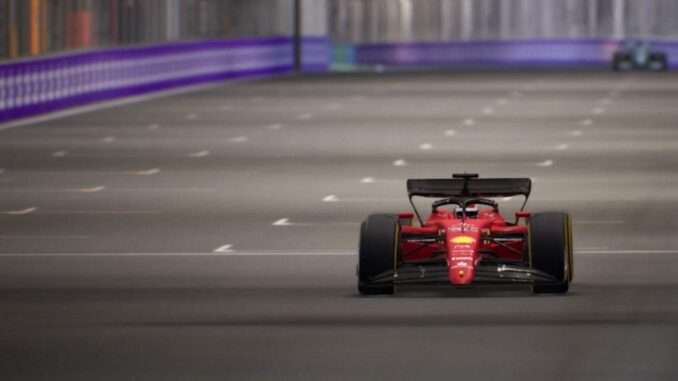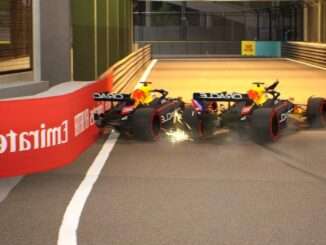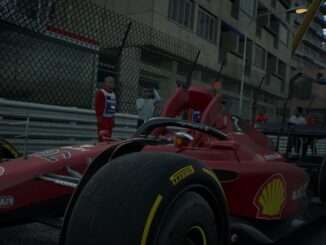
Testing Results
Note: Credit goes to Mike Takumi
All attempts at minimizing the effects of anything else and limit testing to JUST each area was done to the best of the ability there is in game to try and do so. Also keep in mind that there will be differences because some tracks are long, some are shorter, some have a lot of DRS zones, some have just little ones. Tire wear, fuel usage, etc. This works for your average track, adjust a bit using logic as track dictates
Pace:
- Aggressive gains ~.5-.6 seconds per lap, but the tyres will only last 90% as long
- Attack gains ~.8-.9 seconds per lap, but the tyres will only last 80% as long
- I haven’t tested around with going slower because I do not see any reason to besides making longer practice runs for more track knowledge gain
Fuel:
- High fuel will gain ~.4-.6 seconds per lap
- I could go on a whole diatribe about fuel amounts making no sense, as having several laps of -lap delta will give even more speed boost (~.1-.2 per lap when “capped” at about -10% of remaining distance) and your ACTUAL kg remaining means nothing, but mostly if you keep the last 40% of a race on “normal” fuel burn, your driver will adjust and delta will recover, especially if you get stuck in a train (you will, that’s 90% of every race). But if it IS positive towards the end, then the kg remaining is more important because you can have laps of fuel delta remaining when that hits 0 and you are out of fuel. No, this is a mini diatribe, the full diatribe is 3 times as long.
- Further note on fuel, better drivers will burn MORE fuel as they get out of corners better, you may also need to back pace down to save enough fuel in time.
Tyre Compounds:
- Softs are .2 faster than mediums are .1 faster than hards new to new, but the falloff between them varies depending on track and by your driver’s smoothness. It isn’t much, New softs won’t outrun DRS of old hards if the cars are close enough in power, but it can help for pit stop differences.
- Drys lose double digit seconds in 1mm or more conditions, and vice versa for wets/inters in dry
- In 1-4mm wetness, inters are .2 seconds faster than wet, in 4mm+ wets are .2 faster than inters. Yes, even if the track is basically a lake inters remain only .2 slower. Also those tyres will last for easily entire races in any form of wet conditions (I’ve seen wets say 147 laps of duration) so full push mode unless your drivers have poor control.
- Wets will wear much more rapidly if used in 1-4mm range, inters and wets will rapidly degrade in dry conditions.
Driver Skill and Setup:
- Approximately .1 second per 2 rating points, so if you have a 90 skill driver against a 70 skill driver, they will lose a second a lap to them all other things equal
- Setup looked to be ~.1 second per 10% of confidence, so .5 second difference between a 40% setup and a 90% one.
ERS:
- Harvest will lose ~1 second per lap compared to neutral
- Deploy will gain ~1.5 seconds per lap if able to fully utilize the power
- Other modes gain ~1 second per lap if able to fully utilize the power
- All modes seem equal if battery is drained (besides harvest), EXCEPT for overtake/defend if there is a car nearby where they will use it more for position rather than pace.
DRS:
- Is absolutely stupid and is also worth ~.5 seconds for a standard DRS zone, little more for longer, little less for shorter. So depending on track, you’re looking at typically between 1-2 seconds per lap gained on that alone, which is why the leapfrogging is so much faster.
Basic Strat Calls:
- Track position is absolute king, of course. 1 stop is generally the way to go to keep ahead and not benefit a DRS train of slower cars you’d have to work through.
- Always try to be undercutting, then push absolute maximum while the rest of your prepit train pits, you might be able to pull away enough on your stop that they don’t get a tow.
- Technically, doing a full aggression pace race is faster, even if it means a two stop. But considering DRS is broken, the time gain is mooted because the slower pace cars can just fart around behind you and be VERY hard to get to go away unless you severely outclass them (or if Latifi decides to be your hero when you lap him), I’ve had success with this method, I’ve had races where just two stopping and taking the slower overall pace would keep me out of the train long enough to get away. Very track dependent, usually great on minimal DRS tracks, and bad for long/multiple DRS tracks
- If you are a fan of pain, FULL ATTACK can be even faster at tracks with lower tyre wear rates. But even high skill drivers will screw this one up at some point in a race and lose all that time gain by spinning or running wide.
- Regardless of what strat you do, your tyre choice doesn’t matter as long as you’re not taking them below 30% (1 second per lap time loss!) and you use two types.
- With rain, you only want to swap tyres once, from drys to inters/wets, and then back to drys. With only .2 seconds between inters and wets, there will never be enough laps to justify going dry-Inter-wet or vice versa. And even if you’re fully pushing pace on them, they won’t wear enough to justify it either in almost every case.
- ERS can be high risk, high reward, swapping to harvest mode in a train of cars that outclass you can quickly become a death sentence. Also the mode it is in dictates your drivers strategy more than pace or fuel will. They’ll still go for passes/blocks in Neutral or deploy, but they will only put in standard effort. Even with no battery, attack/defend mode will make them far more aggressive about it. In Harvest mode they become VERY conservative and won’t really go for passes or blocks unless they feel super up to it.





Be the first to comment